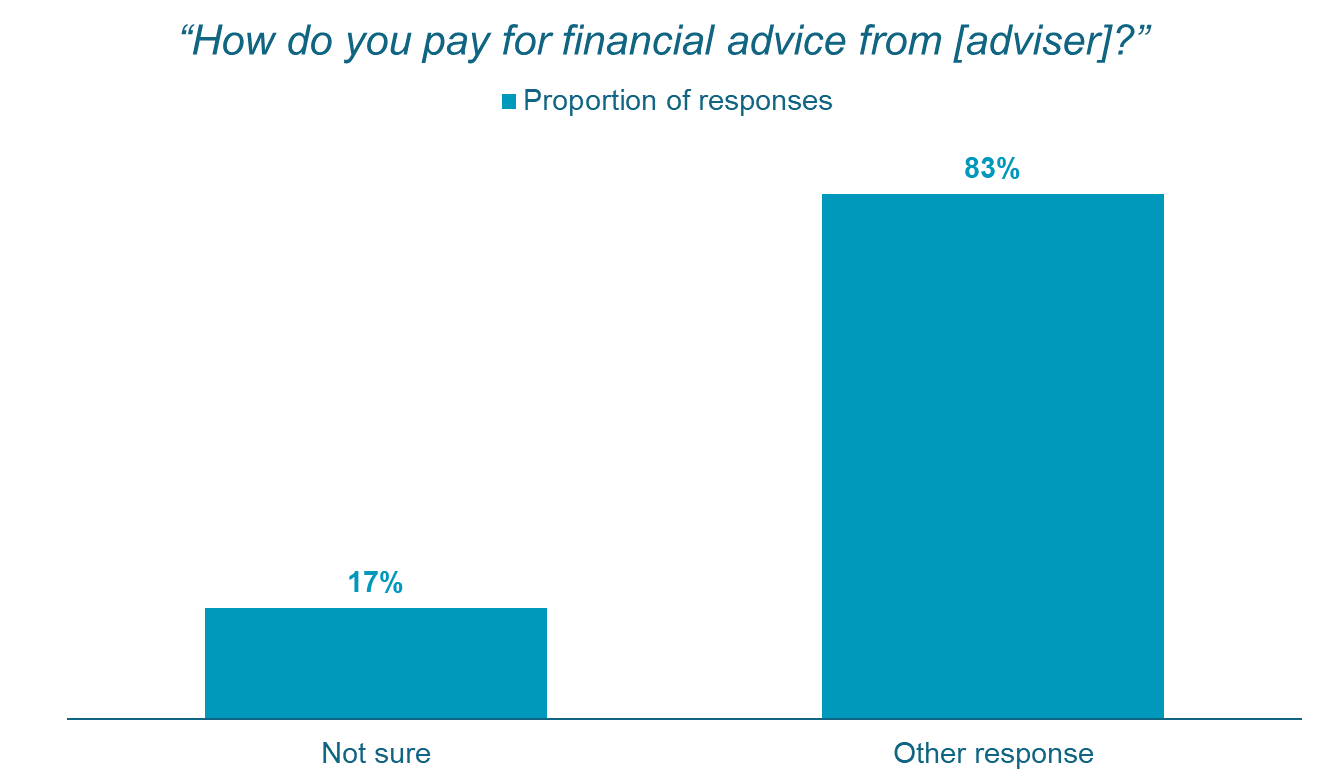Client Understands Fees
Client Understands Fees is a Driver of Elevation Goal 3: Safeguarding clients’ best interests, mitigating risk
Data based on responses to the following question, asked in the Verified Client review form
“How do you pay for financial advice from [adviser]?”
Possible responses
I pay a fixed fee
I pay a percentage of my assets
I pay a combination of a fixed fee and percentage
I pay an hourly fee
Not sure
Client Understands Fees Score
Proportion of respondents answering “I pay a fixed fee”, “I pay a percentage of my assets”, “I pay a combination of a fixed fee and percentage” or “I pay an hourly fee”. I.E. anyone who doesn’t answer “Not sure”
Distribution of responses to Client Understands Fees
Why do we ask about Client Understands Fees?
Clients not understanding the fees they pay was a key risk area arising from our qualitative research with advice firms and advisers.
How to improve your score:
Explanation
Confidence in your structure. Be confident explaining your costs and charges - very few clients shop around or choose an adviser based on their fee. If your client isn’t happy with your fees, it’s better to know before you engage rather than receive a complaint further down the line when they’ve eventually worked them out.
Transparency. Allocate more time and emphasis on explaining fees with your client during your initial meeting. Remember that most clients will either have not taken advice before or may have received a basic explanation from a previous adviser, who could have used a different charging structure. Be clear and transparent with your structure.
Examples & Variables. Work through an example of fees with your client and, if you charge a percentage of assets, include a market movement into the example so your client knows what to expect in this situation.
Follow Up. Include details of the fees in your follow up communication with your clients. You could also link to a fee-calculator on your website, if you have this, so your client can input the numbers themselves and confirm what you’ve said.
Resolve questions fully
Make a point that your client can ask you questions on fees at any time if they don’t understand or would like any clarity, however…
If your client does ask a question, schedule a meeting, or call, to specifically re-explain fees. You’ll get questions for one of two reasons:
- Your client doesn’t understand
- Your client isn’t comfortable with the fees
Either reason should be a red flag that there’s an issue which needs to be addressed. Take time to re-explain how fees are charged and paid – it’s better to invest time here than deal with a future complaint.
Follow Up
Review Meetings. Build time into review meetings to cover the fees charged for the previous period and what you did for your client. Linking the fees to your actions makes them easier to understand and justify in your client’s mind.
Annual Review Reports. Include details of the fees in your annual review report and, if possible, details of what you’ve done for your client over the last year.
Validate
Examples & Variables. Ask your client a question about what a market movement, a withdrawal, or a new ad-hoc piece of work would have on your fees to confirm their understanding. Run through several models with them to ensure they understand fully.
Whilst it may seem counter intuitive to draw so much attention to your fees by testing your clients on them, by helping clients understand your fees completely, you reduce the risk of future complaints and increase advocacy.
Being clear, upfront, and confident explaining your fees, and then testing your client’s knowledge to ensure they understand. That way, your client will feel more comfortable about what they’re paying and you won’t get questions (or complaints) about fees later on!

